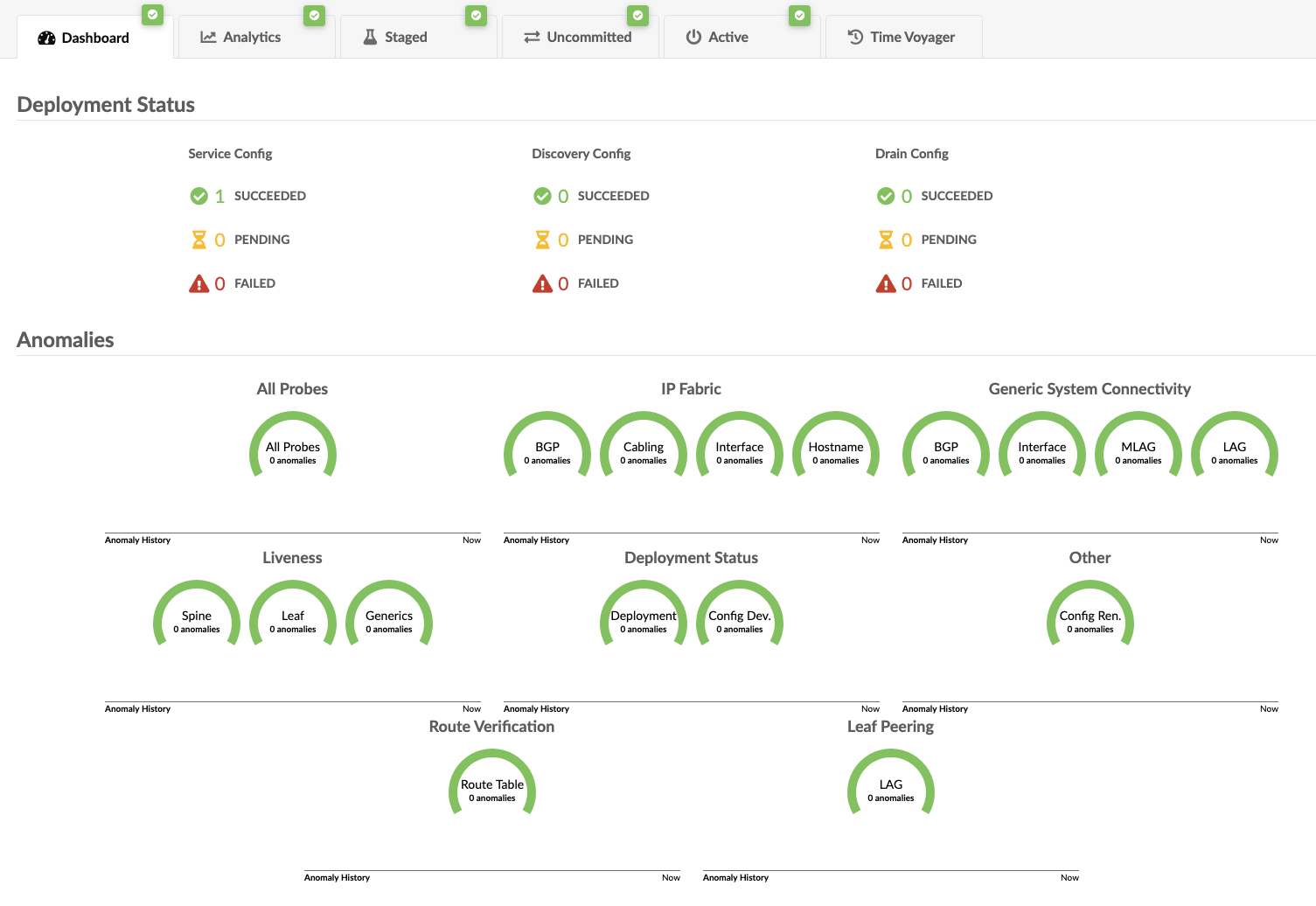Lab Guide 1 - Juniper
Configure External Router Node
The data center Reference Architecture provides the ability model external connectivity in a very flexible and detailed manner. This exercise walks you through defining an external router that provides connectivity to networks outside of the managed fabric. As we progress through the remaining exercises, we will also configure this router to provide connectivity between the overlay networks that we will build in the next exercise. We define an external generic system to represent the router and contain it’s architectural details. We also define its links, IP addressing and BGP peering into the default VRF of the fabric.
Add External Generic System
-
Navigate to Staged > Physical > Topology and select the leftmost switch in the apstra_esi_001 rack. You will move to a new view of the leaf1 switch.
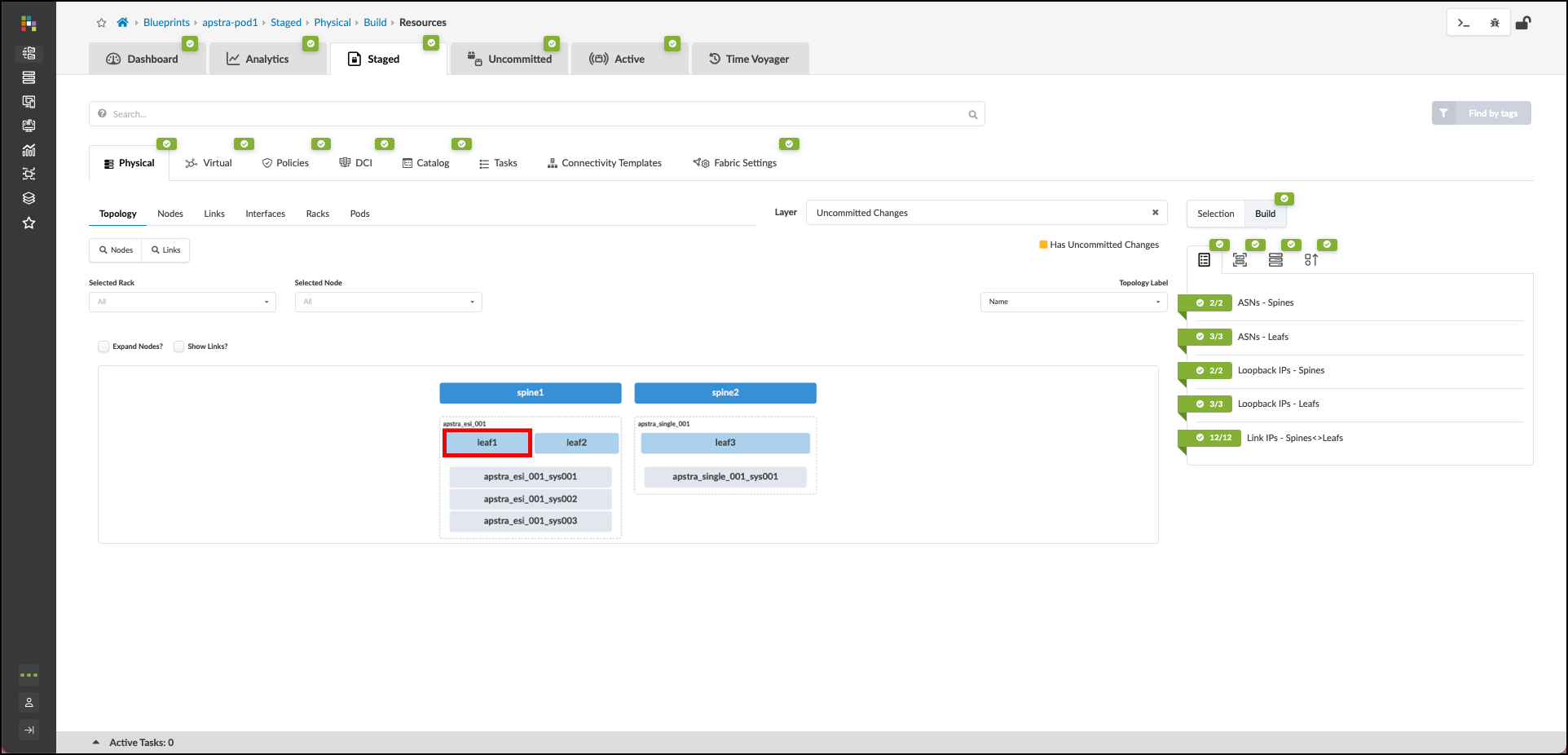
-
On the leaf1 switch, click the box left of the device’s name. When leaf1’s edit menu appears, click Add internal/external generic system.

-
Select "External" as the generic type, then enter "external-router" in the Name field. The "Hostname" field populates with the name you type. Next, add a tag named "Router" to the tags field. Lastly, click Next to proceed to the next page, where the physical links are defined.

-
You are presented with a port layout for each switch in the rack. Click to select the first available port (4) for the first switch, click the "10Gbps" transformation. Set Deploy mode to Deploy, then add a tag named "Router" below in the "Link Tags" section.

-
If the steps are successful, the Add Link button in the center of the window will turn green. Click it to add the link to the Links list on the right.
-
Repeat the steps above for the second rack switch. After you make all selections, your screen should look like this:

-
When everything looks correct, click Create to finish the creation of the external router link. This process stages the addition of the external router, and it’s link details to the Blueprint. You should see this view when the new router object is created. Click the new external-router and you will be taken to another view.

-
This view shows the new external-router with it’s links to each of the dual-rack switches.

Configure Default VRF Peering
We have given the system details about how we wish to physically connect the leaf pair to the external router. Now we need to tell Apstra what kind of layer 3 characteristics need to be applied to the links. This information is placed into an object known as a Connectivity Template (CT). A CT contains the architectural details necessary for creating an IP Link with BGP peering between the leaf pair and the external router. Let’s begin the process of creating our template.
-
Navigate to Staged > Connectivity Templates and click Add Template.

-
In the dialog that opens, click the Primitives tab then click IP LInk to add the primitive to the template. You will see this object appear in the area to the right of the dialog. Now, click BGP Peering (Generic System) to add it to the IP link primitive in the template. Both objects in the open space to the right. Now, we need to specify parameters for these components.
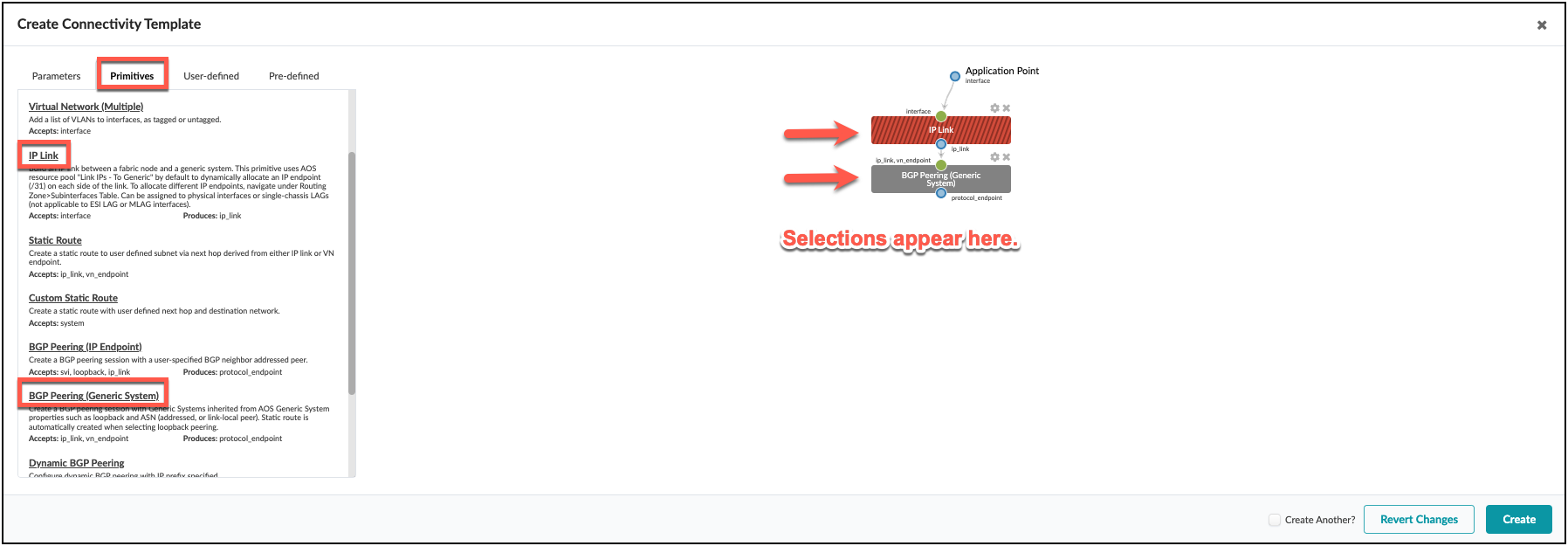
-
Selecting the Parameters tab allows us to edit the values, as shown.
Table 1. Table Configure Connectivity Template Property Value Title
external-router-peering
Tag
Router

-
Click the IP Link arrow to edit the parameters with the values shown below.
Table 2. Table IP Link Parameters Property Value IP Link (hover and select the Edit pencil)
ip_link_default (click save icon)
Routing Zone
Default routing zone
Interface Type
Untagged

-
Click the BGP Peering arrow to edit the parameters with the values shown.
Table 3. Table Configure BGP Peering (Generic System) Parameters Property Value BGP Peering (hover and select the pencil icon to edit title)
bgp_peering_default (click the Save icon)
Keep Alive Timer (sec)
30
Hold Time Timer (sec)
90
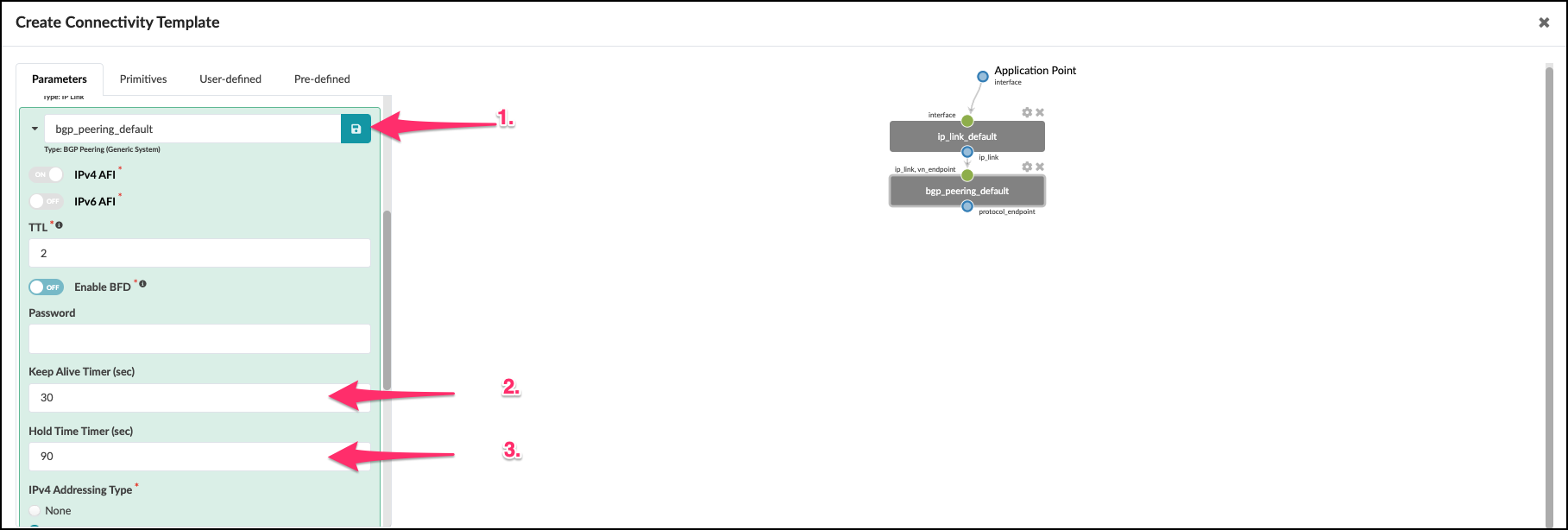
-
Scroll down a bit to see the rest of the settings. The default values here are appropriate for our CT.
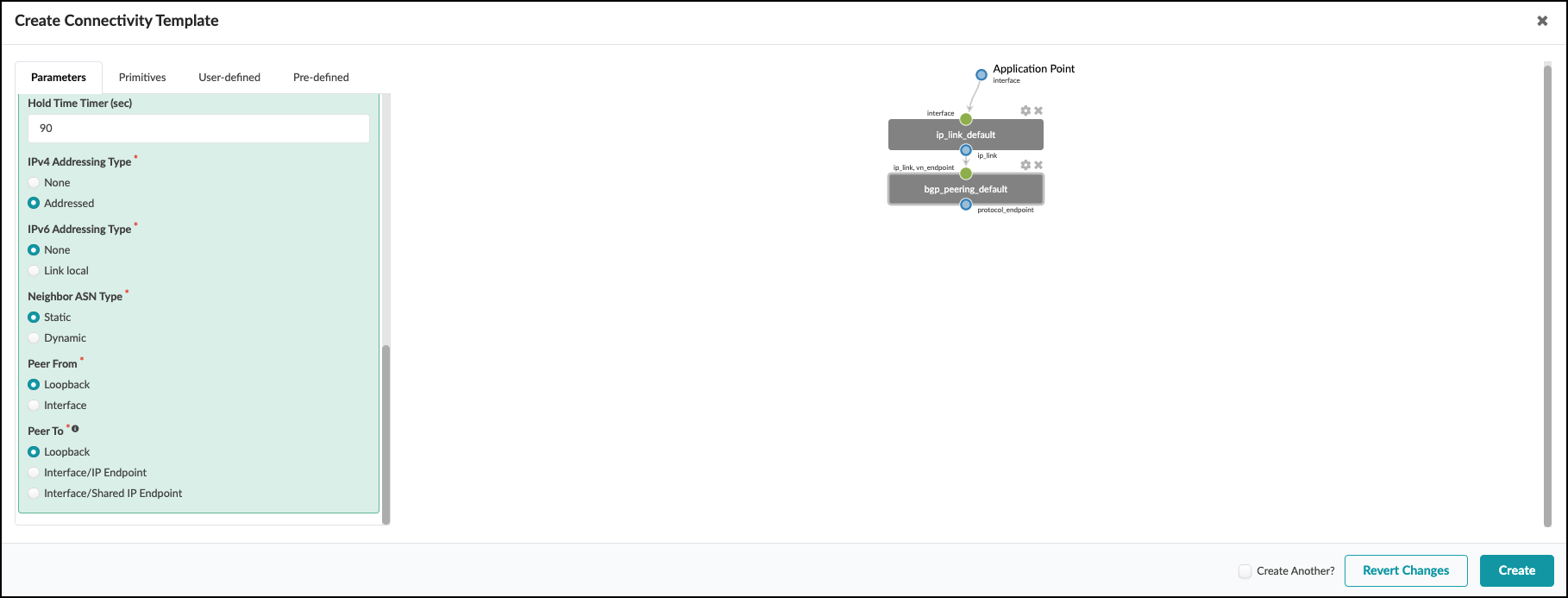
-
Click Create. If everything is defined properly, the connectivity template is listed and the status column shows Ready. Now click the Assign icon to open the view where we associate the CT to the external-router links.

-
In the Assign external-router-peering window check the box for each switch interface assigned to the external-router. Notice the "Router" tag next to each of these interfaces. Tags are very handy for identifying objects and are used more in depth later. After checking the two boxes, click the Assign button.

-
After Assign is clicked, the blueprint view will show new information. First, note that the Connectivity Template shows that it is Assigned on 2 endpoints. Next, there are some new red indicators that we must address.

-
The creation and assignment of our CT to the external router links results in red indications where additional resource assignments are needed. First, navigate to Staged > Physical > Build > Resources table. Click Link IPs - To Generic and assign the external-router IP address pool. Once you have clicked the IP pool, click the diskette icon to save your selections.
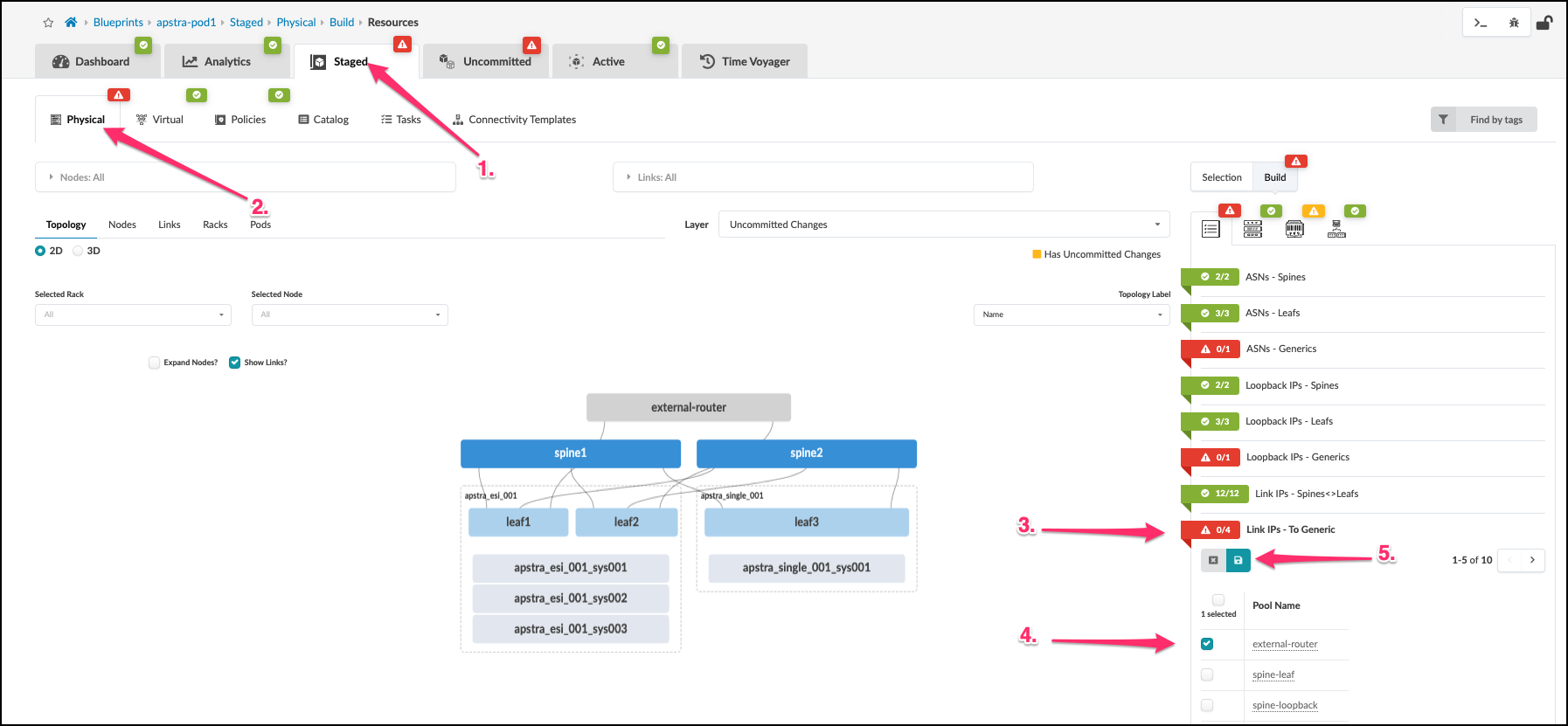
-
Our blueprint now shows that Link IPs-To Generic is now green. But we still have some red indicators that require our attention.
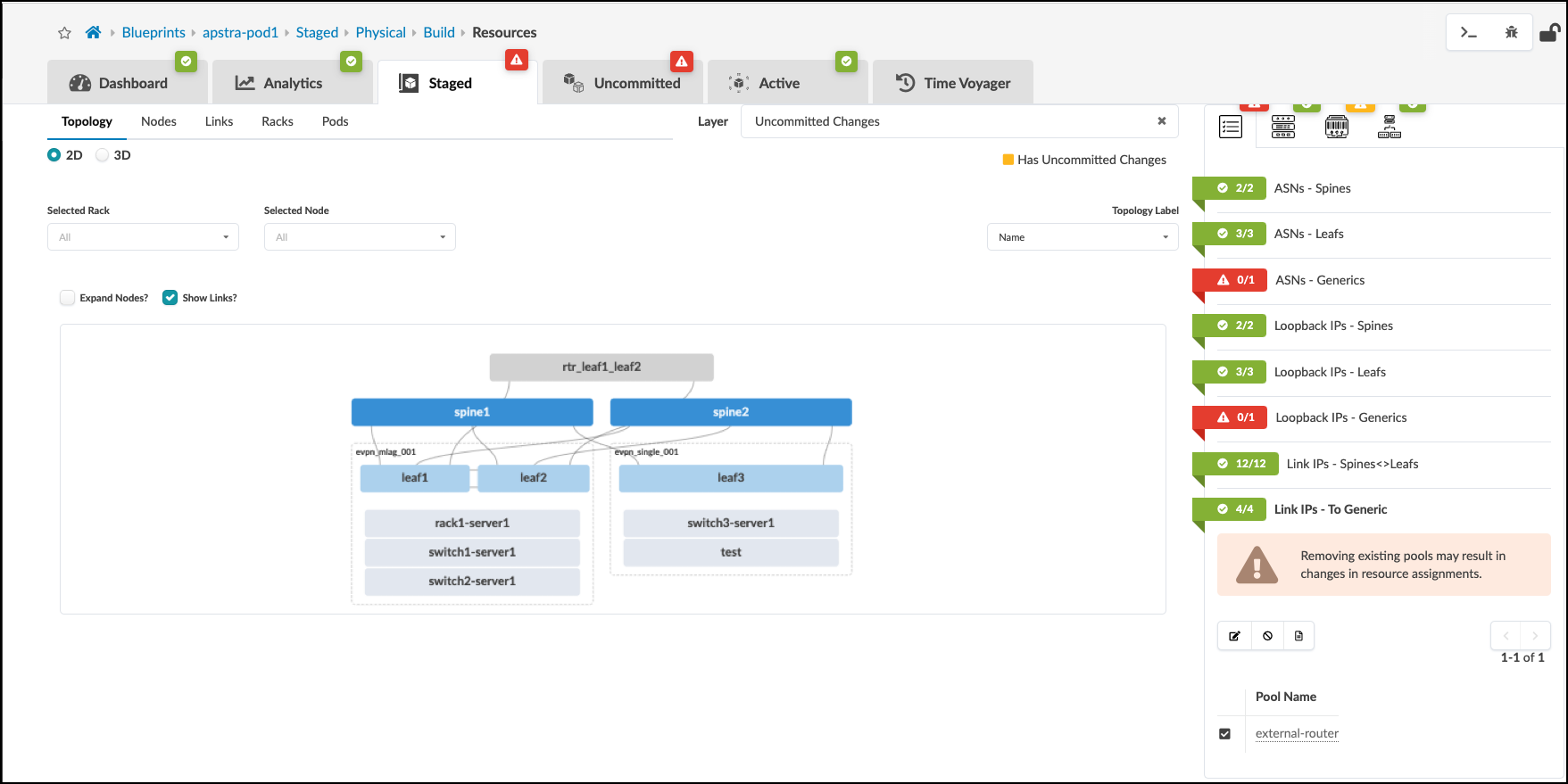
-
Now, click the external-router object. Select the Properties tab. This will change to the view where we will assign the router’s ASN value to 10. Then, we will assign the router’s loopback IP with 9.0.0.1/32. Click the Edit icon for each field and assign the appropriate value. Note that Logical Device will remain red and unassigned since we selected None earlier when defining our External Router links.
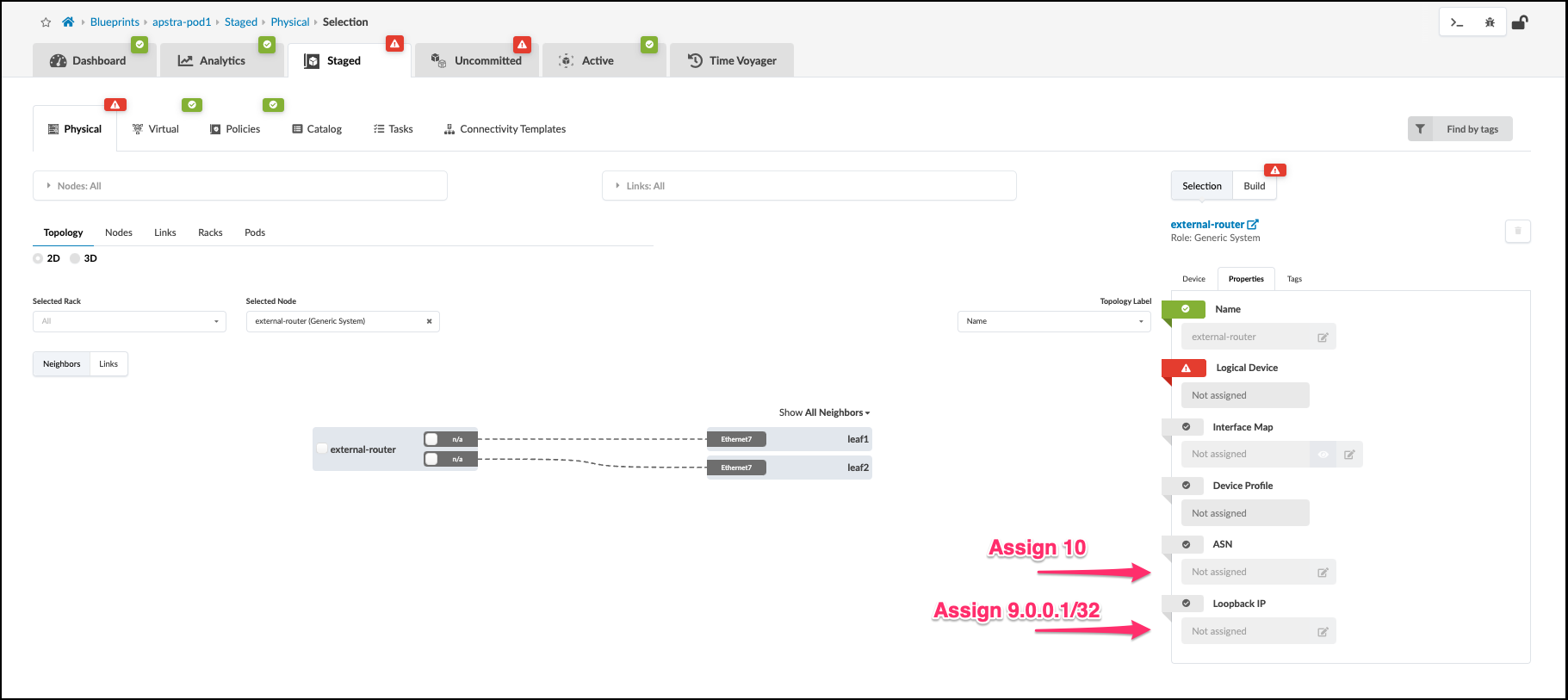
-
The external-router Properties view will now look like this image.
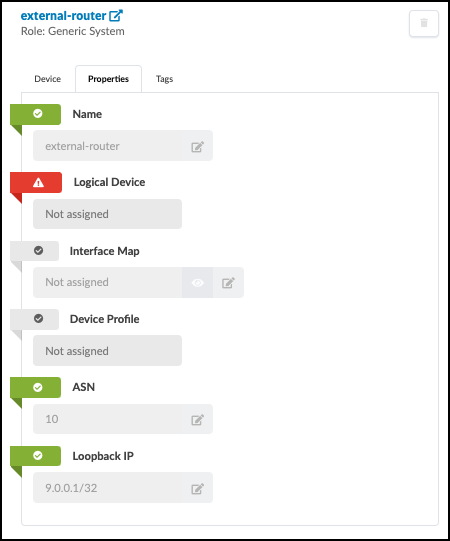
-
Click the X to deselect the external router in the Selected Node field. This will move the view up one level.

-
Now that we have completed the definition of our external router and its properties, we are ready move on and commit all of our staged input into the Blueprint. Our networking intentions will soon come to life.
Deploy Update to the Blueprint
-
Click Uncommitted to see the work we’ve done since our first Commit. We have created an external router, links and a Connectivity Template to support VRF peering. Now, it’s time to deploy these staged elements to the blueprint.
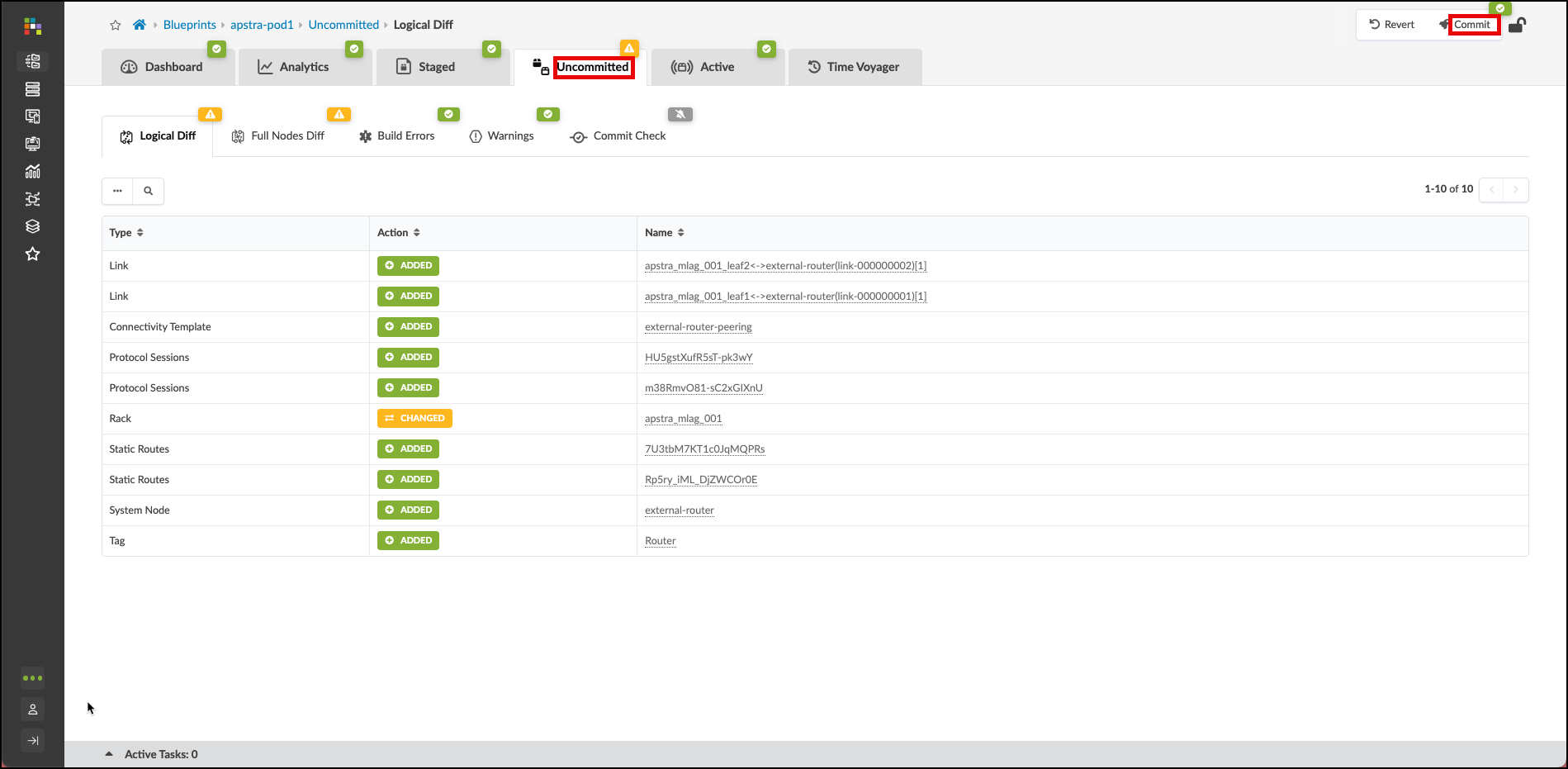
-
Click the Commit button and enter the description "Milestone 2". Then click Commit on the lower right to push the additions to your blueprint.
-
Now, we must perform an additional step for Cloudlabs to update the external router. Apstra doesn’t manage the configuration on this device, so this enables default VRF peering between this router and the leaf pair.
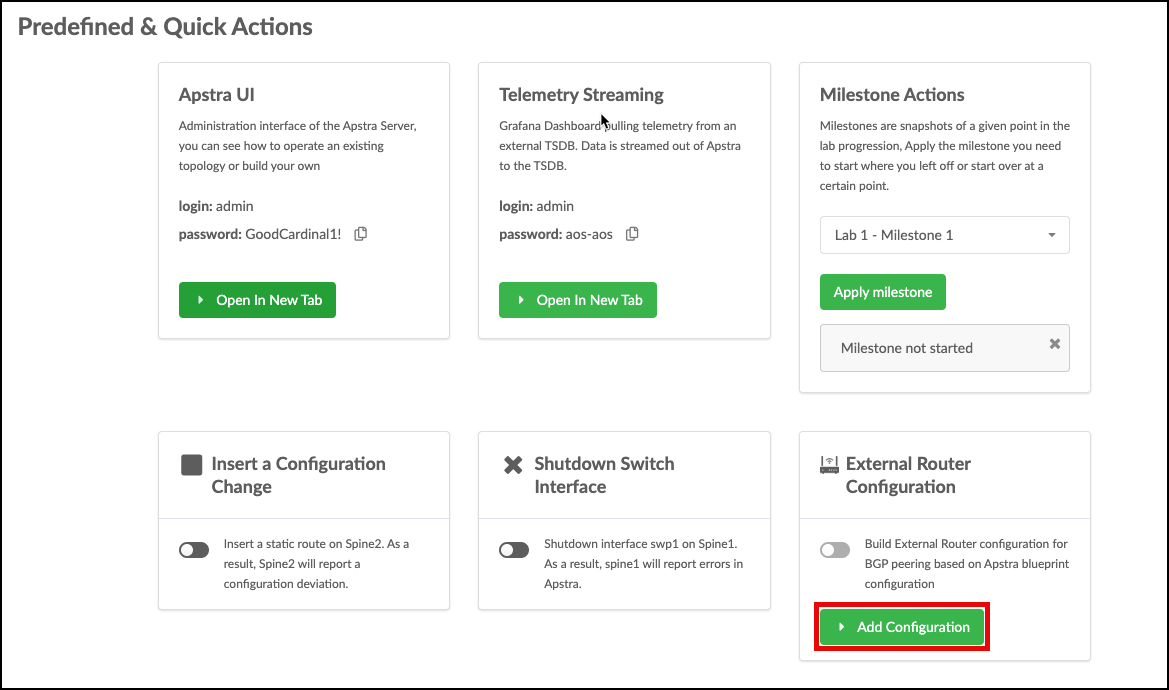
-
Click Add Configuration, enter apstra-pod1 or yourname-pod1 (this value must match what you named your blueprint) and click Submit. The external router will automatically be configured.
